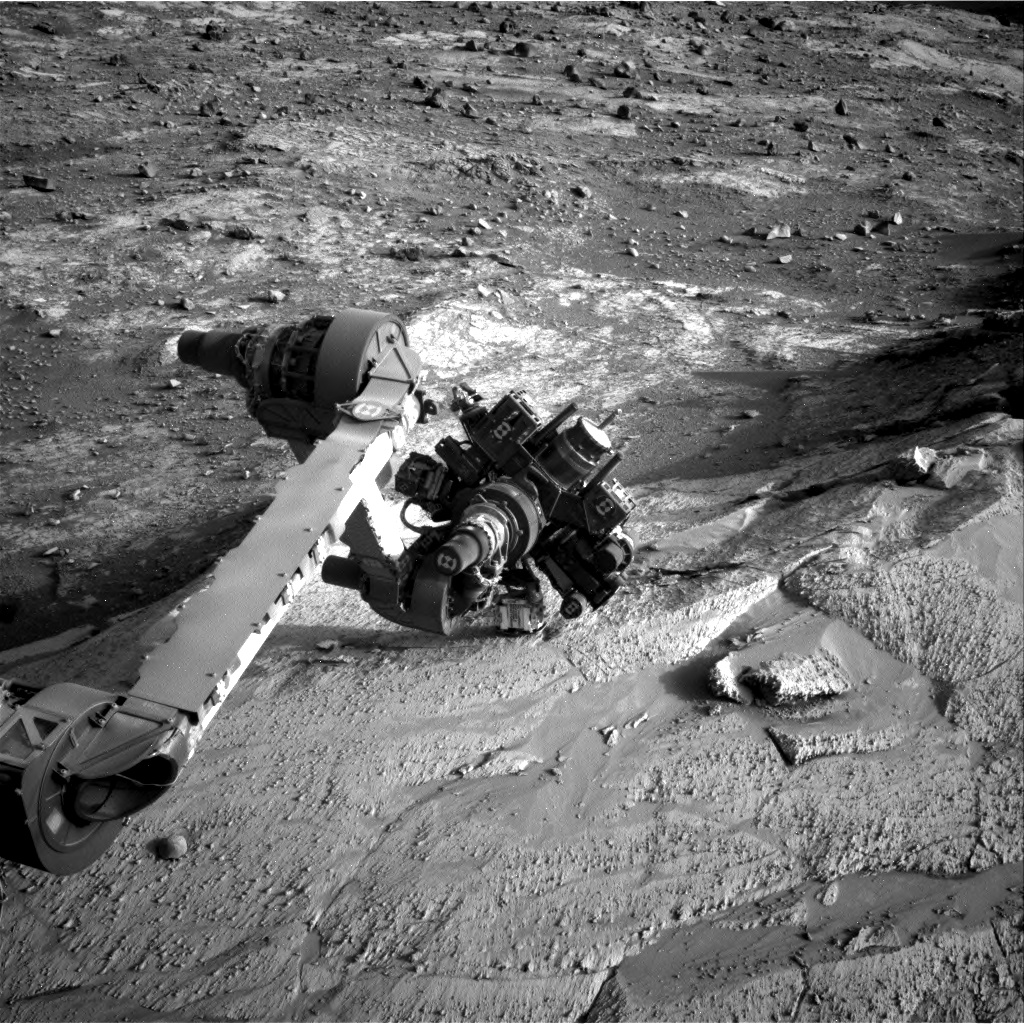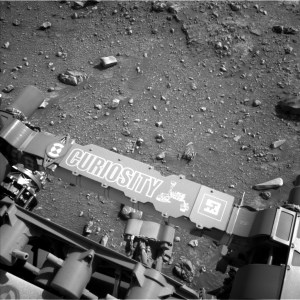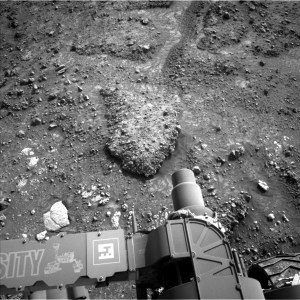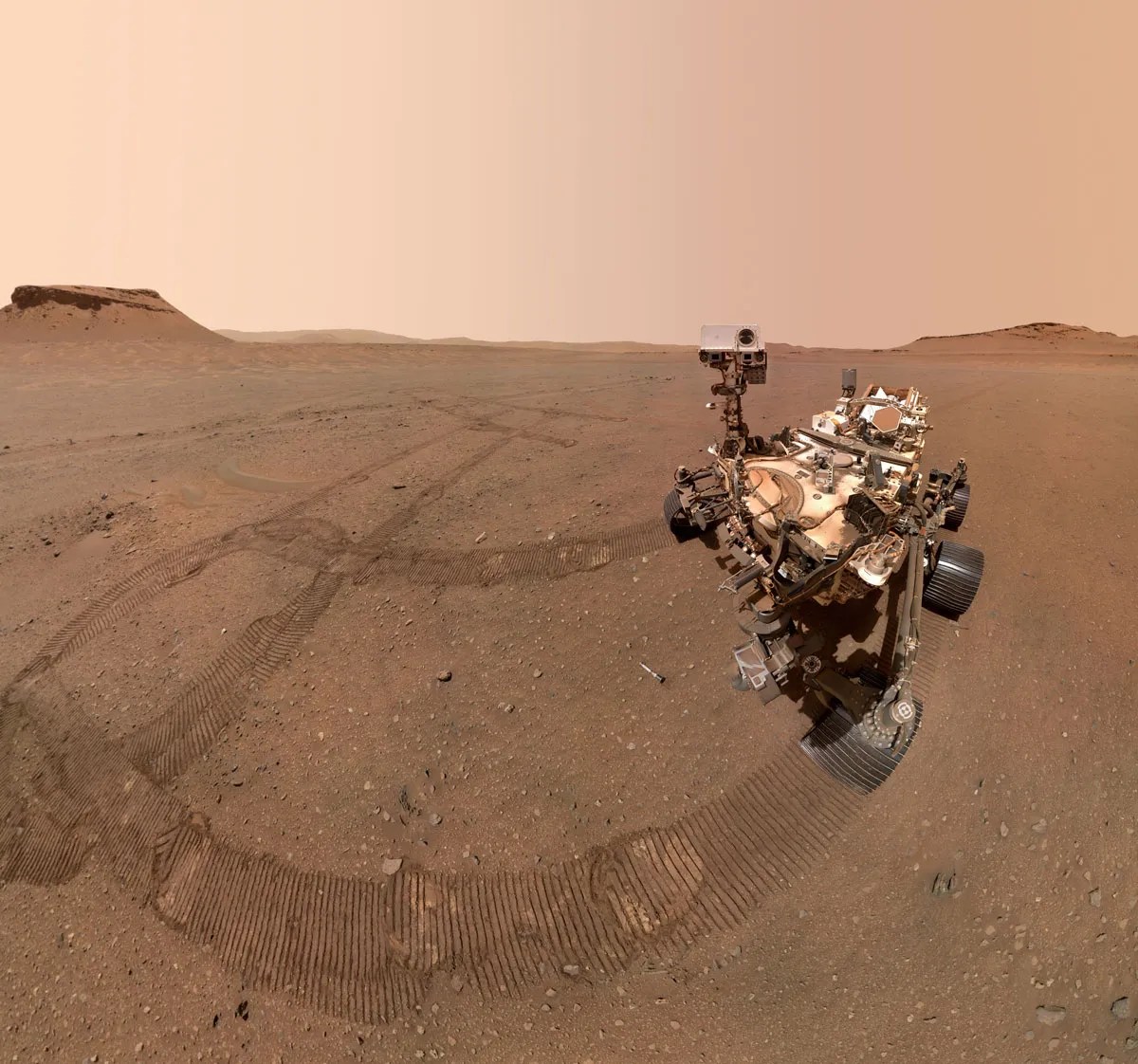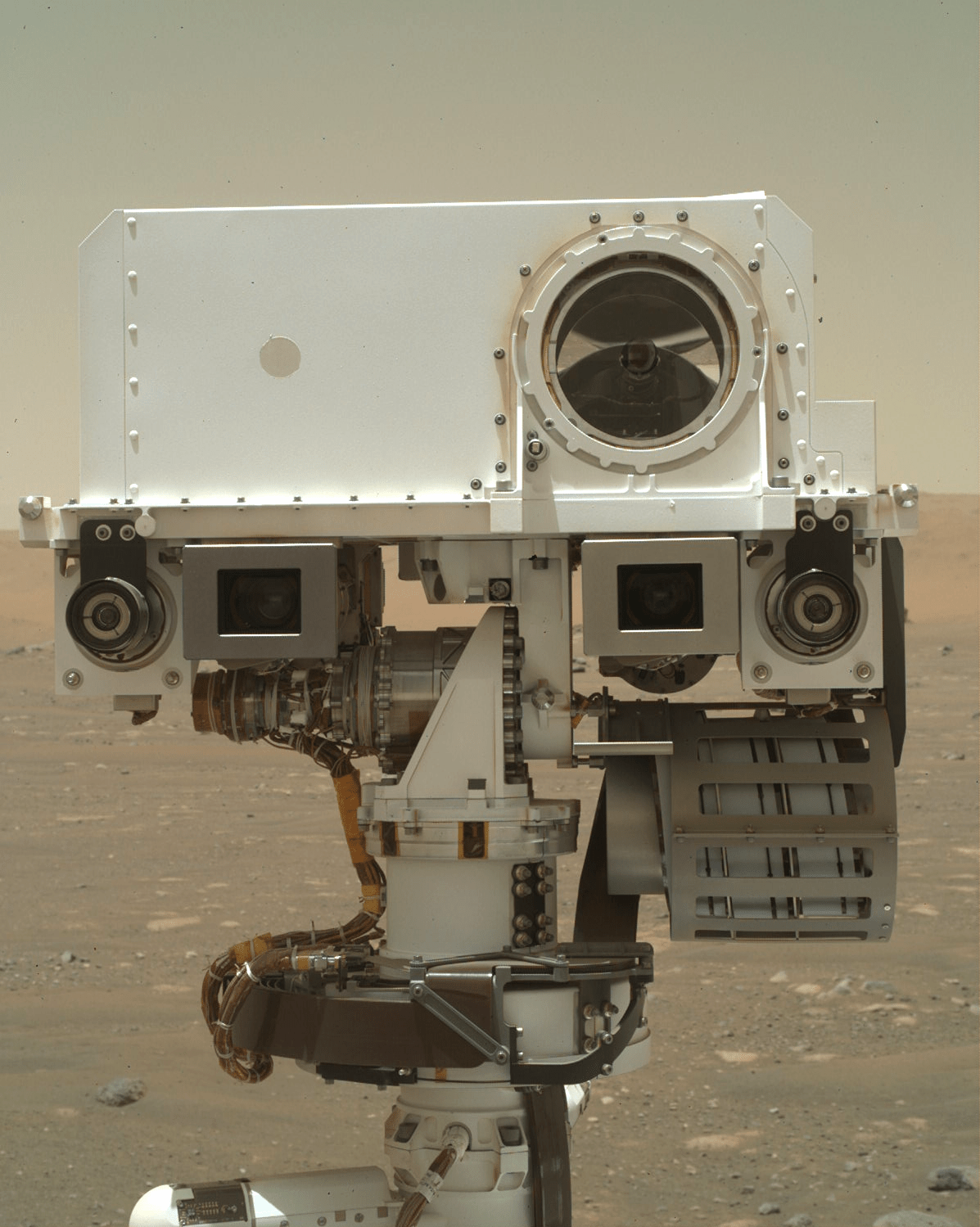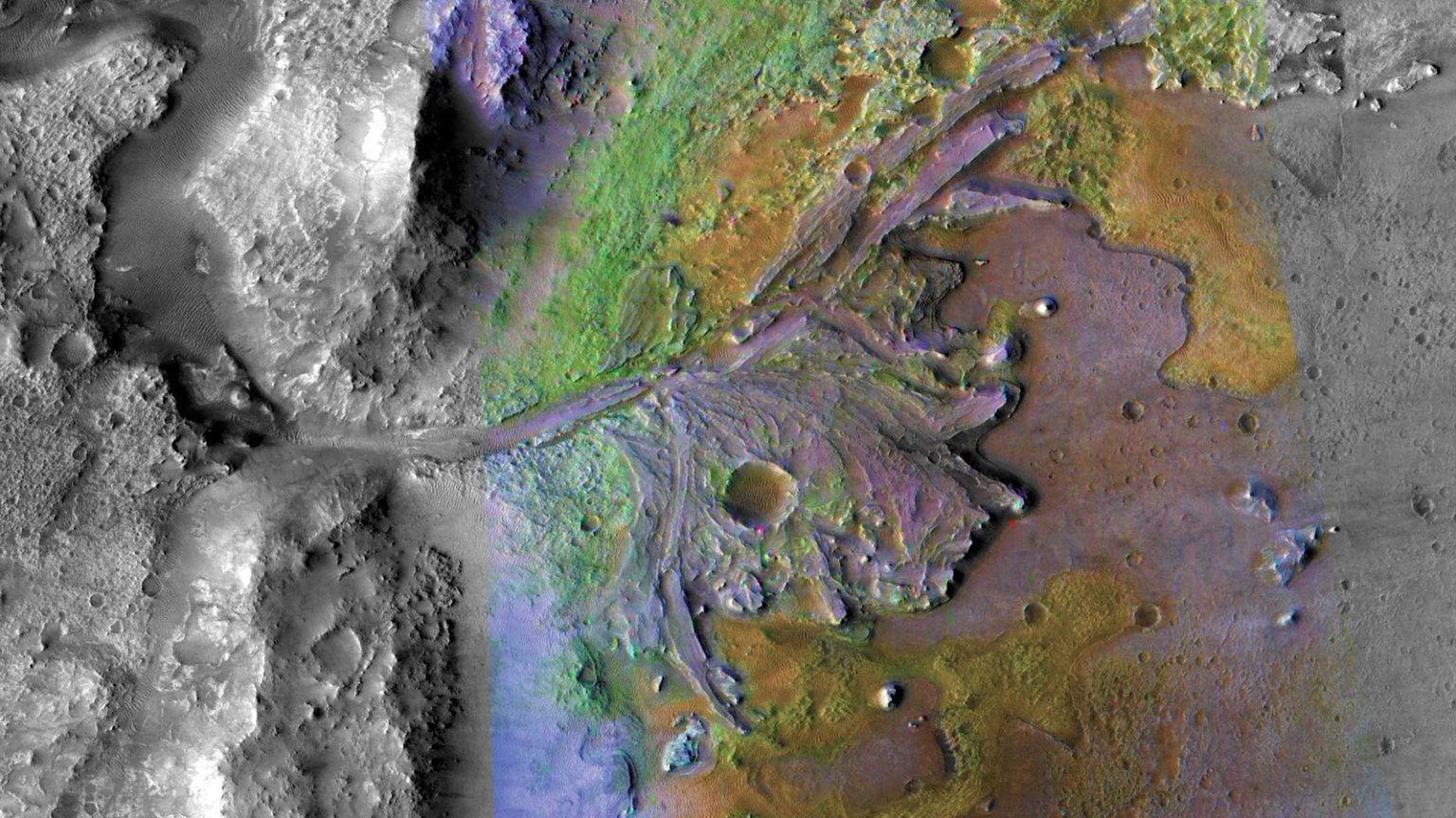
3 min read
Sols 4250-4252: So Many Rocks, So Little Time
Earth planning date: Friday, July 19, 2024
As usual with our weekend plans, we are packing a lot of science into today’s three-sol plan. I had the fun of planning a complex and large set of arm activities as the Arm Rover Planner today. Since we did not drive in Wednesday’s plan, we still are looking at targets in the same workspace – shown in the image with the arm down on a contact science target. We are finishing up the observations at our current location on “Fairview Dome.”
In our first set of imaging, we begin with a Navcam dust devil movie. Then, ChemCam is taking a LIBS observation on “Koip Peak” (a nodular bedrock) and an RMI mosaic on Texoli butte. We also have Mastcam imaging on Koip Peak, “Amphitheater Dome” (Wednesday’s contact science target), the channel wall, and the AEGIS target from sol 4247. After a nap, we’re ready for the arm. The arm work was challenging today, as we had a lot to do. We start by taking MAHLI images of a target named “Saddlebag Lake,” a bumpy, rough part of the bedrock. We then brush and take MAHLI images of “Eagle Scout Peak,” which is a dusty portion of the same bedrock. We are also running an experiment today to see if we can run the DRT brush in parallel with using our UHF antenna, to downlink data without impacting the data. After integrating with APXS on Eagle Scout Peak, we take nighttime MALHI imaging (using the LEDs) of the CheMin inlet to look for any signs of stuck sample and stow the arm. We are also cleaning out the sample from the CheMin instrument, by “dumping” it out and then running an analysis on the empty cell.
The second sol begins with more atmospheric observations. We have another ChemCam LIBS observation of the “Smith Peak” target, which is a dark and dusty spot on the bedrock, and Mastcam mosaics of “Virginia Peak” (the gray edge of the rock), the summit of “Milestone Peak”, and “McDonald Pass” (a nearby piece of bedrock that looks similar to our recent drill target, “Whitebark Pass”). We’re then ready to drive. Today’s drive is taking us about 30 meters south (about 98 feet). We’re driving cross-slope, which is always a challenge because we have to account for sliding sideways, away from the planned path. Fortunately there are no major hazards in the area, so we can tolerate some deviation from our path. This drive should take us close to our next potential drill location! We’re also testing, for the first time on Mars, a new capability that helps the rover make more precise arc turns, which can reduce the amount of steering we need to do, and help preserve our wheels. After taking our normal post-drive imaging, our final activity on this sol is an APXS atmospheric observation.
On our third sol, around noon, we are taking a ChemCam AEGIS observation and a lot of atmospheric observations, including another dust devil survey and Mastcam solar tau. Finally, just before handing things over to Monday’s plan, we take additional atmospheric observations in the early morning.
Written by Ashley Stroupe, Mission Operations Engineer at NASA’s Jet Propulsion Laboratory

